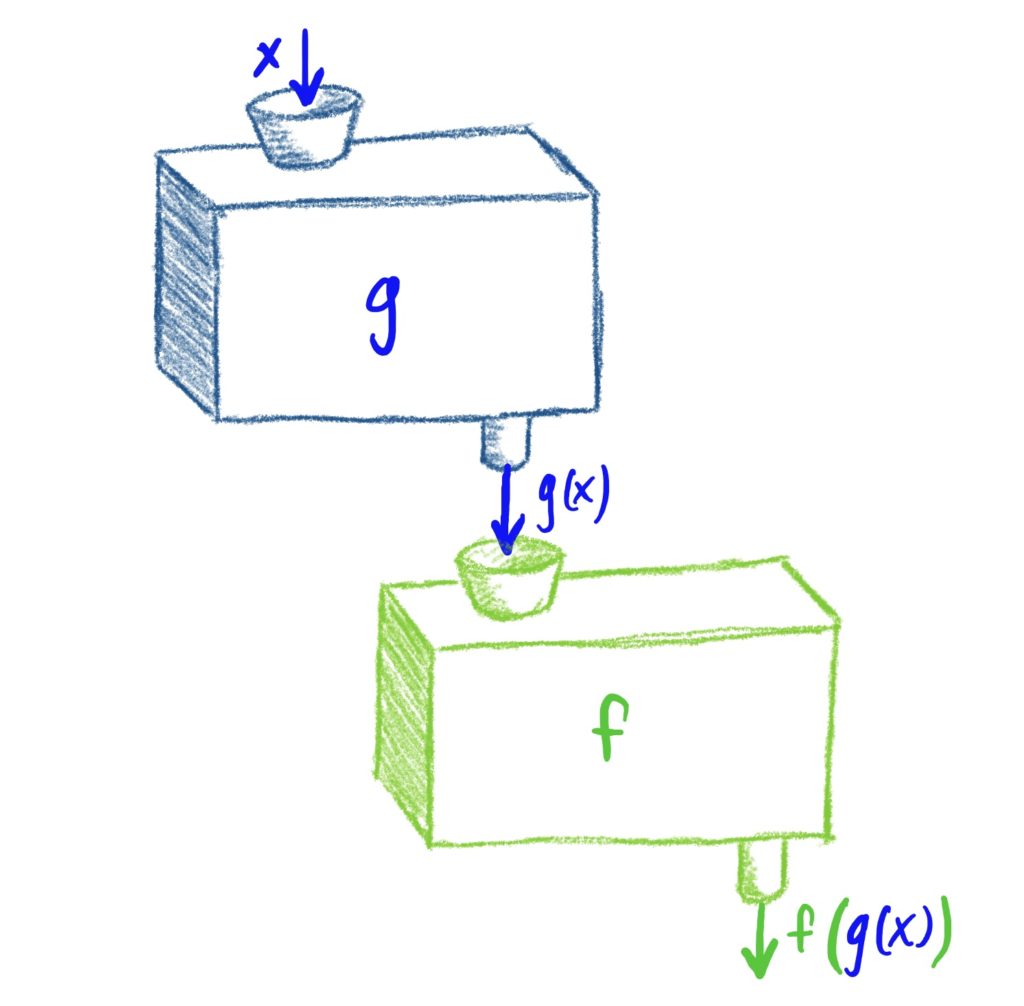Sets
Set Operations
4 Topics
Exponents and Exponential Expressions
Polynomial Arithmetic
Factoring
Factoring Quadratic Expressions
2 Topics
Rational Expressions
Arithmetic with Rational Expressions
3 Topics
Radical Expressions
Simplifying Radical Expressions
4 Topics
Rationalizing Denominators
2 Topics
Functions Basics
Domains and Ranges of Functions
2 Topics
New Functions Constructed From Old
Piecewise-Defined Functions
2 Topics
Linear Functions
Quadratic Functions
Solving Quadratic Equations
3 Topics
Exponential Functions
Exponential Functions Basics
2 Topics
Logarithms
Logarithms
4 Topics
Function Composition: Plugging One Function Into Another
Function Composition as a Concept
Function composition is literally nothing more than chaining together functions, taking the output of one function and feeding it into another function as input. Think of function composition as “daisy-chaining” two or more machines together, or forming an assembly line. See below.

In the above, we are first feeding some input \(x\) into the machine/function \(g\) and then taking the output of that function, namely \(g(x)\), and then feeding that as input into \(f\), which then produces the final output \(f(g(x))\).
In what follows, we will be demonstrating how this “chaining together” of functions works in terms of the several different ways we represent functions.
Lesson Content
0% Complete
0/3 Steps
